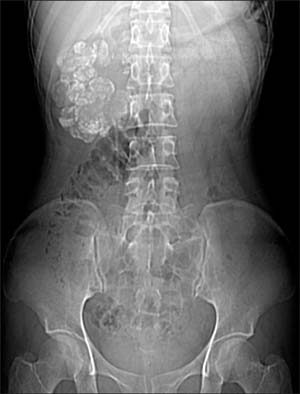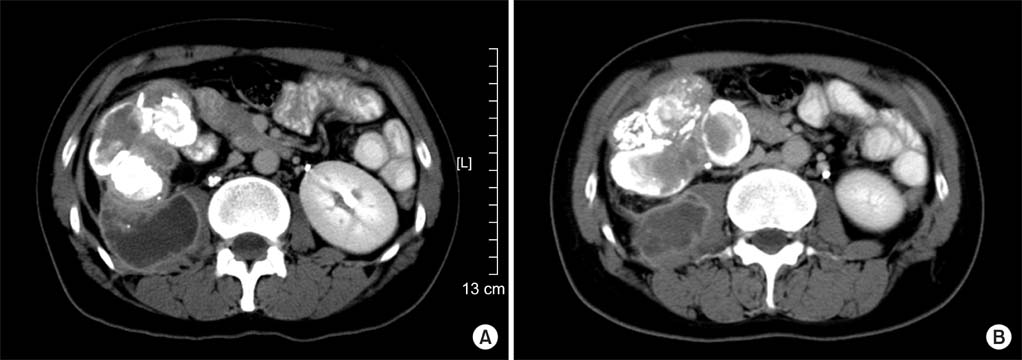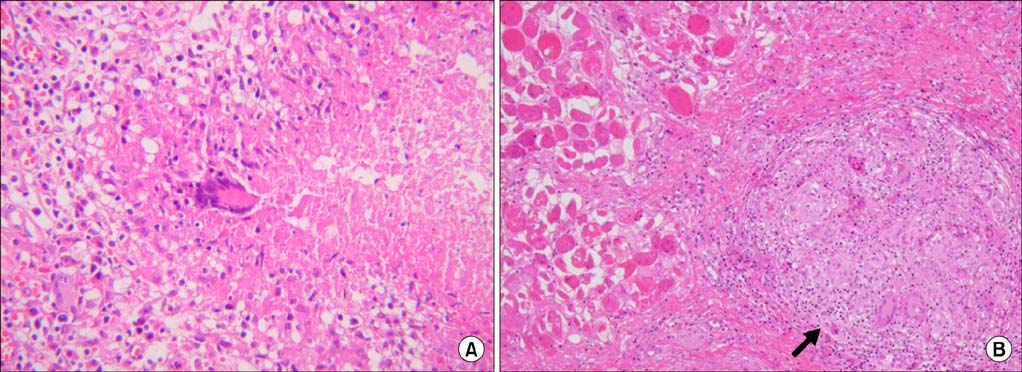Korean J Urol.
2013 Nov;54(11):801-804.
Psoas Abscess Secondary to Renal Tuberculosis in a Middle-aged Woman
- Affiliations
-
- 1Department of Urology, Clinical Research Institute, Kangwon National University Hospital, Kangwon National University School of Medicine, Chunchon, Korea. paulee@kangwon.ac.kr
Abstract
- A psoas muscle abscess is a relatively uncommon condition that can present with vague clinical features. With the decreasing prevalence of tuberculosis, psoas abscesses of tuberculous origin are currently rare in developed countries, but are typically caused by tuberculosis of the spine. Here, an unusual case of a psoas abscess secondary to renal tuberculosis in a middle-aged woman is presented. The abscess was successfully treated with percutaneous drainage followed by nephrectomy and additional antituberculous medications.
Keyword
MeSH Terms
Figure
Reference
-
1. Harrigan RA, Kauffman FH, Love MB. Tuberculous psoas abscess. J Emerg Med. 1995; 13:493–498.2. Walsh TR, Reilly JR, Hanley E, Webster M, Peitzman A, Steed DL. Changing etiology of iliopsoas abscess. Am J Surg. 1992; 163:413–416.3. Wise GJ, Marella VK. Genitourinary manifestations of tuberculosis. Urol Clin North Am. 2003; 30:111–121.4. Gallucci M, Alpi G, Ricciuti GP, Ferrone G, Fagioli A, Bernabai CF. Abscess of the psoas muscle and of the thigh secondary to a mastic-like tuberculous kidney. Minerva Urol Nefrol. 1985; 37:311–313.5. Figueiredo AA, Lucon AM. Urogenital tuberculosis: update and review of 8961 cases from the world literature. Rev Urol. 2008; 10:207–217.6. Chern CH, Hu SC, Kao WF, Tsai J, Yen D, Lee CH. Psoas abscess: making an early diagnosis in the ED. Am J Emerg Med. 1997; 15:83–88.7. McAleer SJ, Johnson CW, Johnson WD Jr. Tuberculosis and parasitic and fungal infections of the genitourinary system. In : Wein AJ, Kavoussi LR, Novick AC, Partin AW, Peters CA, editors. Campbell-Walsh urology. 9th ed. Philadelphia: Saunders;2007. p. 436–447.8. Lee JY, Park HY, Park SY, Lee SW, Moon HS, Kim YT, et al. Clinical characteristics of genitourinary tuberculosis during a recent 10-year period in one center. Korean J Urol. 2011; 52:200–205.
- Full Text Links
- Actions
-
Cited
- CITED
-
- Close
- Share
- Similar articles
-
- A case of bilateral psoas abscesses in a patient with rheumatoid arthritis
- A case of bilateral psoas abscess in multiple myeloma patient
- A Case of Salmonella Psoas Abscess Presenting as Low Back Pain and Subacute Renal Failure
- A Case of Renal Subcapsular Abscess Complicated with Psoas Abscess and Femoral Vein Thrombosis in Diabetic Patient
- A Case of Mucinous Adenocarcinoma of the Colon Presenting with Psoas Abscess




